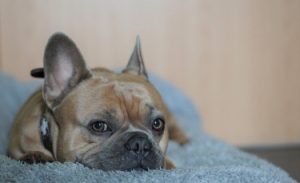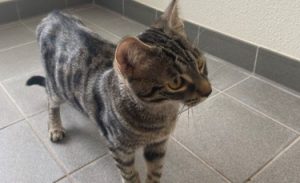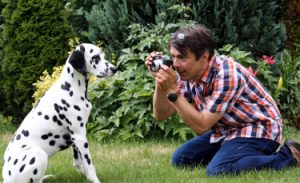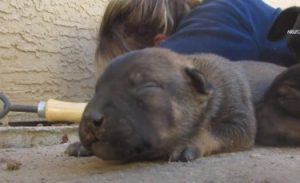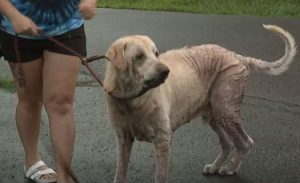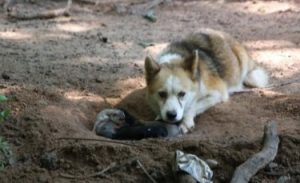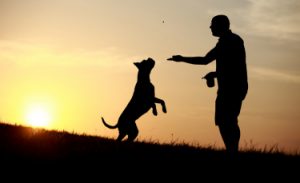Other name: Perdiguero de Burgos
The Braque de Burgos is a large and rather heavy hunting dog.
<!–
–>

| Short | |
| Spain | |
| Big | |
| Long |
| Sex | Weight | Cut |
|---|---|---|
| Female | From 23 kg to 32 kg | From 59 cm to 64 cm |
| Male | From 23 kg to 32 kg | From 62 cm to 67 cm |
History of the breed
the Braque de Burgos is a dog of very ancient origin . The breed originated in Spain , where it made its mark at the start of the 17th century . Probably descended from native races of Burgos, it would have served as the basis for the development of many other races of pointer in Europe. The Braque de Burgos found itself on the verge of extinction during the 1930s and 1940s, mainly due to the Spanish Civil War and WWII.
Fortunately, passionate breeders such as Don Manuel Izquierdo and Don Geardo Sardonil have gone out of their way to preserve the breed by producing quality litters. Even if nowadays, the number of births remains quite low. the Braque de Burgos remains relatively uncommon outside its country of origin . The breed was definitively recognized by the Fédération Cynologique Internationale (FCI) on November 12, 1954.
Physical features
His hair: short, smooth, tight, moderately thick.
Its color: white and liver for the base, mixing irregularly to form dresses of various combinations (speckled with liver, graying liver, speckled with liver, etc.).
His head: big and strong. The skull is well developed, broad, strong and rounded, the stop slightly marked and gently sloping, the muzzle solid and forming, with the skull, a moderate rectangle. The nostrils are wide open and the lips drooping, but not flabby.
His ears: triangular in shape, long, hanging down and soft and soft in texture.
Her eyes: almond-shaped, medium in size, nutty in color with a gentle, even somewhat sad expression.
His body: writable in a square, powerful and agile. The neck is strong and broad, the withers well defined, the back powerful and muscular, the croup solid. The chest is broad and well let down.
Its tail: attached moderately high and thick at its base.
Behavior and character
| Affectionate | |
|---|---|
| Calm | |
| Protective | |
| Independent | |
| Hunter | |
| Barks / howls |
Behavior with others
| Cohabitation with children | |
|---|---|
| Sociable with other animals | |
| Love strangers |
the Braque de Burgos is a dog with a balanced temperament . As a companion, he is rather calm, composed and pleasant . Hunting, his favorite area, he is a very good pointer : the Braque de Burgos is predestined for a variety of feathered and feathered game . Calm, confident and intelligent , he can evolve on any type of terrain. He can also be very comfortable as a report dog.
The Braque de Burgos
is it right for you? Take the test!
Education
| Clever | |
|---|---|
| Obedient |
Intelligent and rather docile , the Braque de Burgos is not a particularly complicated dog to manage and train. A minimum of firmness and softness make it an excellent hunting and life companion. As with any hunting dog, learning to recall is necessary.
Living conditions
| Suitable for apartment living | |
|---|---|
| Good for new masters | |
| Love it hot | |
| Love the cold |
the Braque de Burgos is above all a hunting dog who requires activity and availability from his master. Not very inclined to live in an apartment, it can however adapt to an urban lifestyle if it has a large fenced garden and enjoys long daily walks.
Health
| Solid | |
|---|---|
| Ease of gaining weight |
Robust and rustic, the Braque de Burgos is a dog who asserts his resistance and his good health . On the other hand, the breed is predisposed to certain diseases, mainly of a dermatological nature: demodectic mange or vitiligo.
Hypoallergenic breed
No
Litter size
Between 5 and 10 puppies
To protect yourself from these risks and insure your companion in the event of health problems, Woopets recommends a Braque de Burgos dog insurance .

function showAssuranceForm () {var siteReferer = var id_race_association = ”; //console.log(id_race_association);success: function (html) {}});}document.addEventListener (‘DOMContentLoaded’, () => {$ (‘# assuranceModalBanner’). on (‘show.bs.modal’, function (event) {showAssuranceForm ();});});
Life expectancy
Minimum: 12 years old
Maximum: 14 years
The life expectancy of a Braque de Burgos is, on average, between 12 and 14 years.
Calculate the human age of your Braque de Burgos!
To choose… 1 year 2 years 3 years Four years 5 years 6 years 7 years 8 years 9 years 10 years 11 years old 12 years 13 years 14 years old 15 years old 16 years old 17 years 18 years old 19 years old 20 years 21 years old
Maintenance and hygiene
| Ease of maintenance | |
|---|---|
| Cost of maintenance | |
| Hair loss |
| Drool level | |
|---|---|
| Ease of grooming |
the Braque de Burgos is fairly simple to maintain . It only requires regular brushing to maintain the cleanliness of its hair and skin.
It is recommended to brush the dog once a week and to systematically inspect the inside of his ears after each outing.
Price and budget
Purchase price
Mini
Max € 500
1000 €
The purchase price of a Braque de Burgos is between 500 € and 1000 €.
Annual maintenance cost
Mini
NC Maxi
NC
The annual maintenance cost of a Braque de Burgos is between NC and NC.
No name is currently proposed. Use our tool to find the name of your Braque de Burgos!
Want the best for your dog?
Create tailor-made food for your Braque de Burgos
I discover !
PROMO -30% | Delivered to you!

Physical activity
| Athletic | |
|---|---|
| Energy level | |
| Potential to play |
The Braque de Burgos needs a lot of exercise to get active. It is a hunting dog which is cut to walk for long and great distances , ideally in the middle of nature. He therefore needs frequent and long daily outings .
Others
| Master character <span class="btnTooltip qTip2" title="- Calm: the master must be gentle and know how to show patience. – Active: the owner must be energetic and dynamic to live in harmony with his dog. – Hyperactive: the owner must be stimulating and very restless to suit the temperament of his dog.”> |
Calm |
|---|
FCI Information
FCI No.
90
FCI Group
Group 7: Pointing dogs
Recognized by FCI
Since 1954
</div



